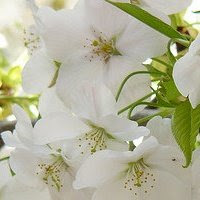Let’s Explore Japan ^__^
KANSAI
The Kansai region has prospered as the capital of commerce in Japan since olden times. As such, Kansai is characterized by its distinct vitality and energy even today, creating a very special atmosphere that enlivens the visitor as well.
Osaka, 3 hrs. by Shikansen super express or 1 hr. by air from Tokyo, is Japan’s third-largest city and the commercial and industrial hub for western Japan. Situated at the mouth of the Yodo River emptying into Osaka Bay, Osaka has a network of canals that crisscross under its many busy streets, which have played an important role in the city’s prosperity.
As a classical city, it is very proud of its being the origin of Bunraku puppet theater. The Osaka Bay area is a must for visitors as an emerging center of the trendiest in urban attractions. The March 2001 opening of Universal Studios JapanTM, a Hollywood-based theme park, is an exciting addition to the area’s many attractions.
The absolute highlight is Osaka Castle, once the largest in Japan, built in 1586 by Toyotomi Hideyoshi. The present five-storied fortress, a copy of the original, contains many historical art objects and documents related to the Toyotomi family and Osaka of the old.
Nakanoshima, on a small delta between divergent streams of the Yodo River, is the civic center . At its end lies Temmangu Shrine, dedicated to Michizane Sugawara, a noted scholar. Nearby is the Tenjinbashi Shoping Street which has long prospered by catering to worshippers and visitors to the local shrine. A walk along its shopping arcade provides a glimpse into the daily lifestyle of the local residents.
For entertainment and shopping, don’t miss the Umeda and Namba districts. Umeda, centered around Umeda Sta., has a number of modern underground arcades which are always teaming with visitors and shoppers. Worthy of its reputation for “kuidaore” (the epicurean joy of over-indulgence in the delights of the table), Osaka truly caters to the gourmet. Try popular Osaka dishes such as “yakiniku” (grilled meat), “fugu-nabe” (globefish hotpot), “kushi-katsu” (skewed deep-fried pork and onions), “sushi” and “tako-yaki” (baked dumpling containing a piece of boiled octopus), among many, many others.
Kobe, 30 min. by rail from Osaka, is a major seapot which has developed at a rapid pace since the Meiji Restoration began in 1868, A city of hills, Kobe has many narrow paths and walkways that wind up and down the Rokko foothills that form the city’s backdrop. One of Japan’s main ports, along with Yokohama. Kobe harbors a fascinating foreign residential enclave that is great for strolling.
Kobe Port Tower, soaring 108m., is beautifully lit up in the evening. Across the way is Kobe Harbor land, a newly emerging waterfront development. It bustles with throngs of visitors who enjoy the famed night view of this great port city well into the evening hours.
Another major attraction in western Japan is located in Himeji City. Himeji Castle is one of the most beautiful castles to be found in the nation. With its twisting paths through the castle grounds leading past alabaster---plastered walls and the original buildings---preserved as national treasure---a visit here is not to be missed.
For a different unforgettable experience, stay at the monastery at the summit of Mt. Koya, a 2-hr. rail ride from Osaka. Founded in 816 by Kobo Daishi, the great exponent of the Shingon sect Buddhism, the monastery is comprised of over 120 temples, of which 53 offer lodgings and vegetarian meals at reasonable prices. The monastery is visited by 1 million pilgrims annually.







